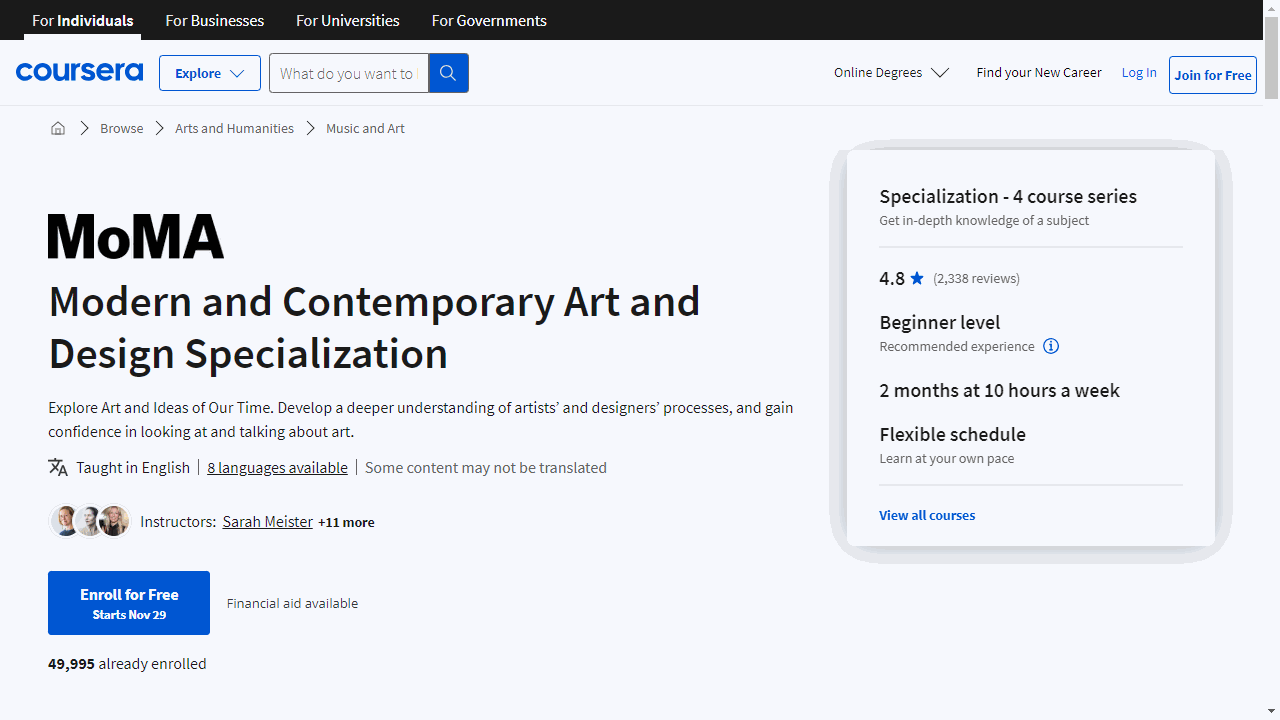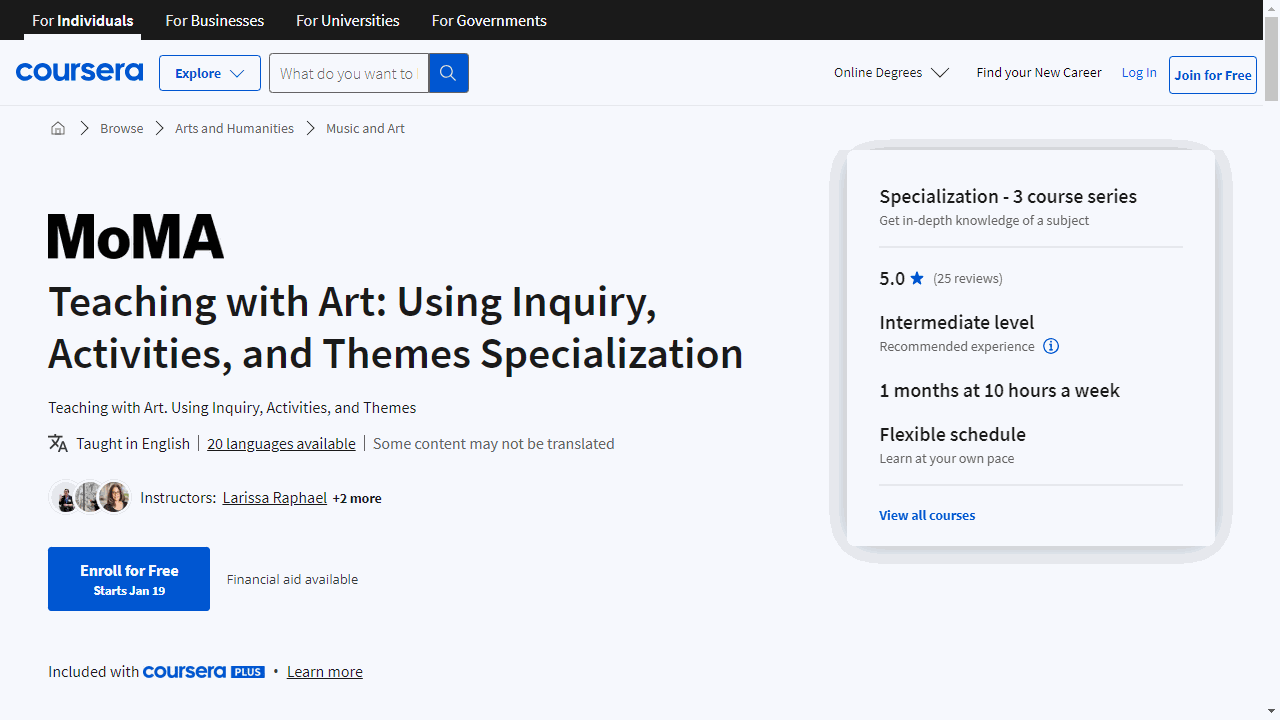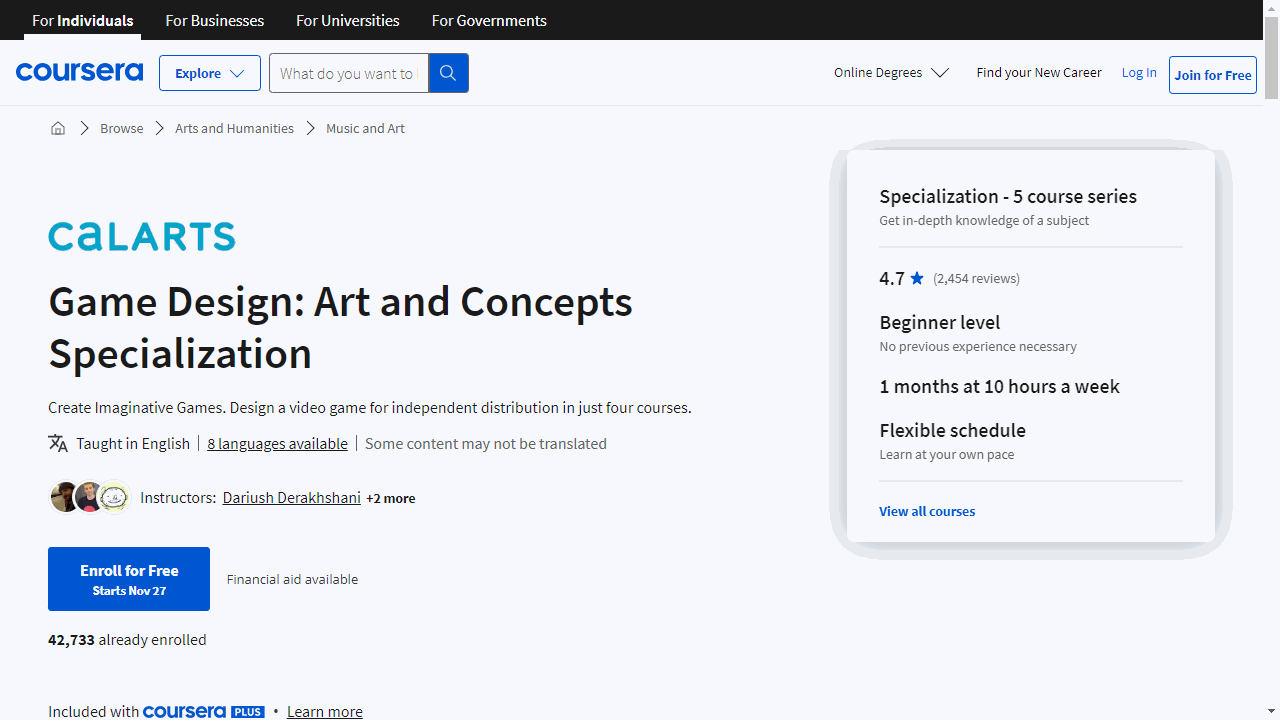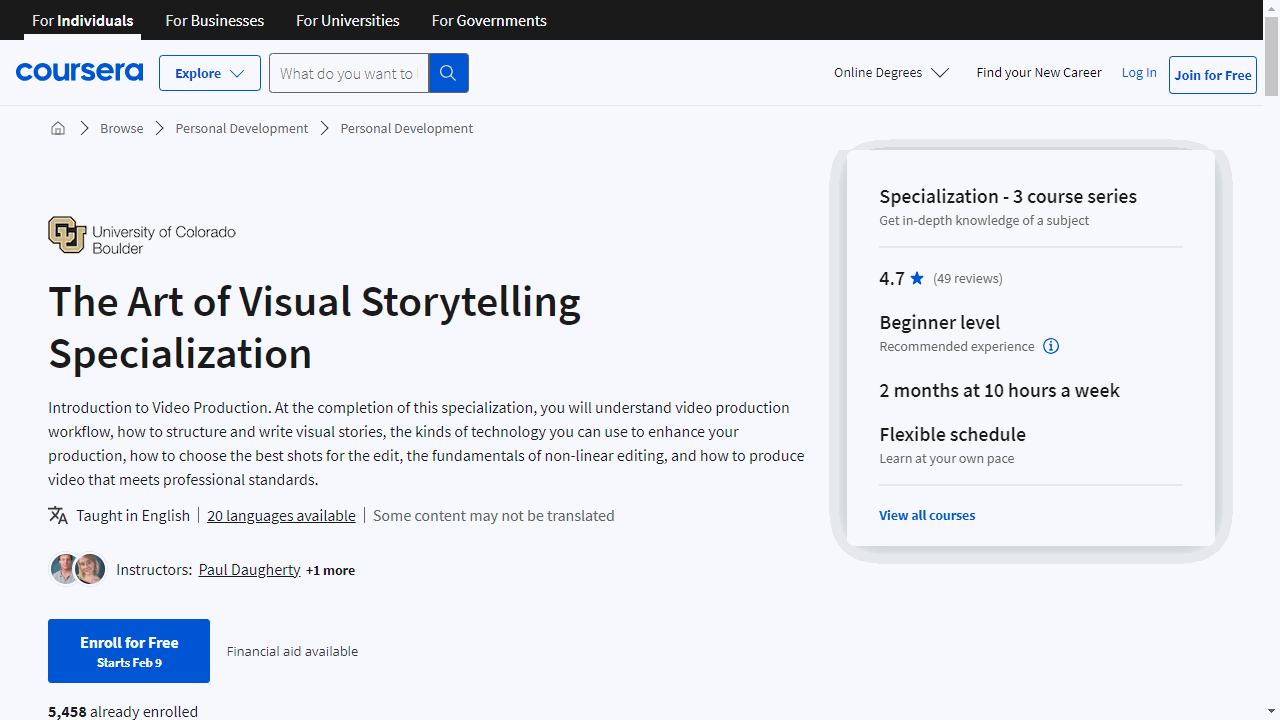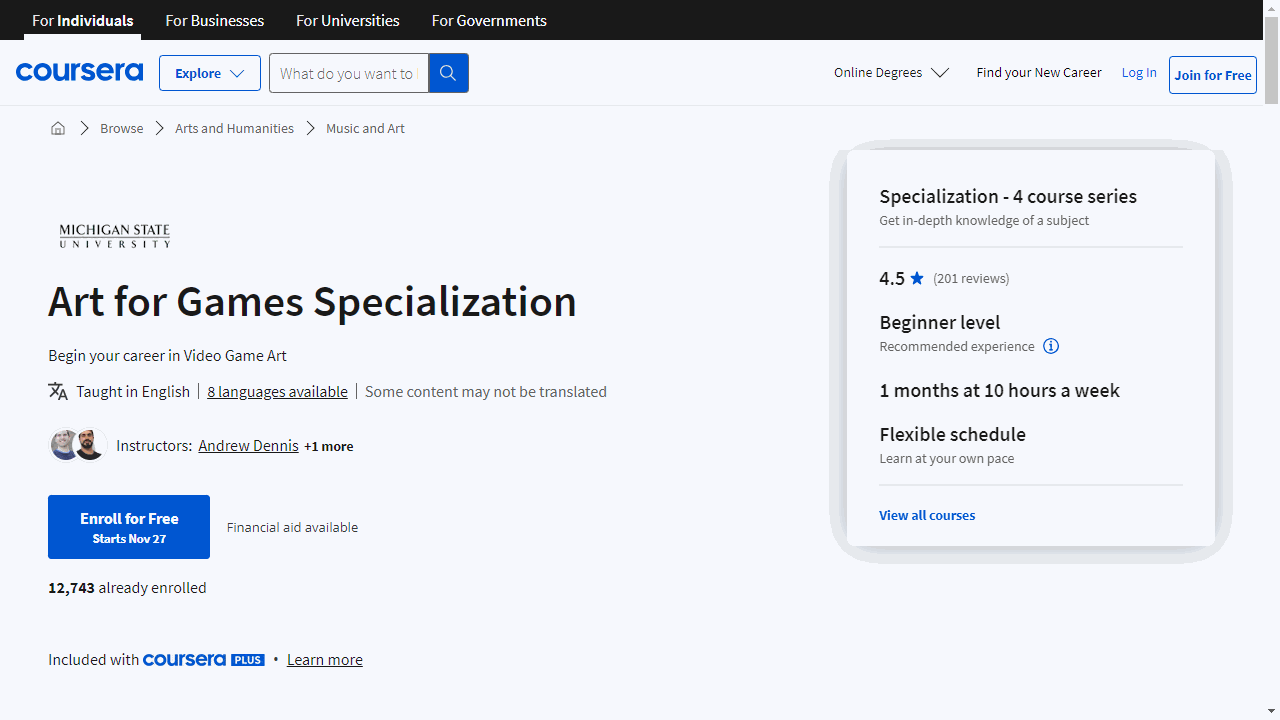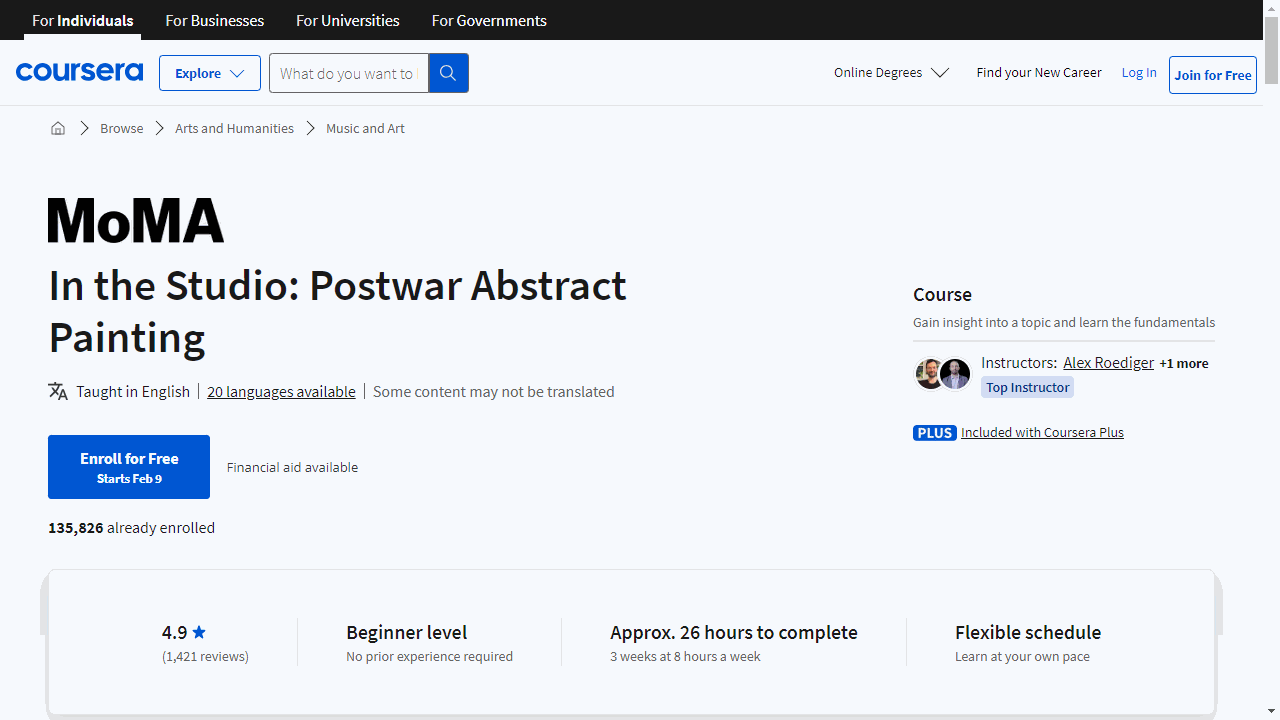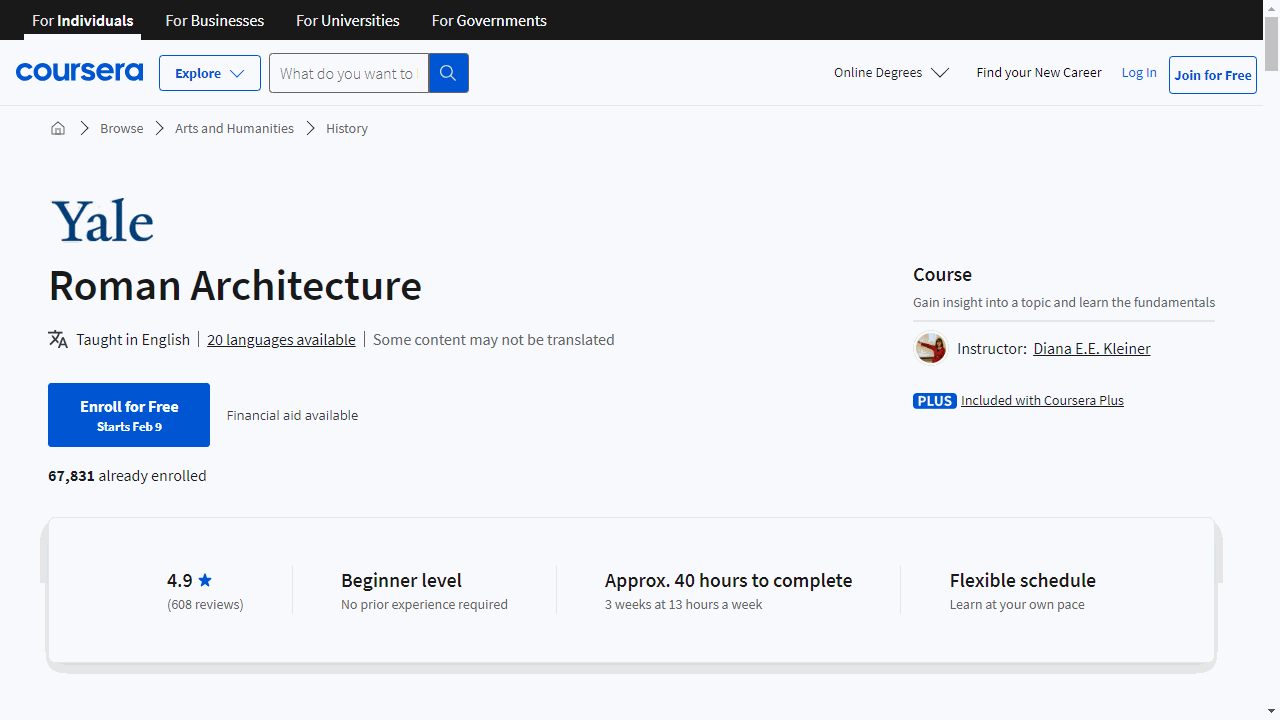Teaching with Art: Using Inquiry, Activities, and Themes Specialization
Provider: The Museum of Modern Art
Say goodbye to mundane lessons and hello to a world where art and education converge to inspire both you and your students.
This specialization is crafted to seamlessly integrate art into your teaching, making lessons more dynamic and impactful for your students.
Dive into “Art & Inquiry: Museum Teaching Strategies For Your Classroom” to master the art of inquiry-based learning.
You’ll learn to craft questions that provoke thought and encourage students to engage deeply with content.
This approach not only enlivens discussions but also sharpens critical thinking skills, preparing students for complex problem-solving.
Next, “Art & Activity: Interactive Strategies for Engaging with Art” offers you tools to design hands-on activities that transform students from passive listeners to active participants.
This course emphasizes the importance of activity-based learning, fostering personal development and a more profound understanding of the material through direct experience.
Finally, “Art & Ideas: Teaching with Themes” connects artistic themes to a wide array of academic subjects.
By exploring themes like Places & Spaces and Art & Society, you’ll learn to create interdisciplinary connections that resonate with students’ lives and interests.
This thematic approach not only enriches your curriculum but also helps students see the relevance of their learning in the broader world.
Each course in this specialization is a stepping stone to creating a more engaging, thoughtful, and connected classroom environment.
Modern and Contemporary Art and Design Specialization
This collection of courses offers a comprehensive look into the art and design world that’s both accessible and deeply informative.
Dive into “Modern Art & Ideas” to explore the intersection of environment, identity, and society in art.
You’ll gain insights from artists and curators, connecting art to your own life through interactive discussions.
It’s an enriching experience that broadens your understanding of modern art’s themes and practices.
“Seeing Through Photographs” elevates your engagement with images.
This course isn’t just about taking pictures; it’s about dissecting the intent and narrative behind them.
With an expanded collection of photographs and new interactive content, you’ll learn to critically analyze and discuss photography, enhancing your visual literacy.
“What Is Contemporary Art?” demystifies the art of our era.
Through a selection of over 70 recent works, you’ll hear directly from artists and learn about their creative processes.
This course empowers you to confidently approach contemporary art, recognizing its relevance to current issues and your own experiences.
Lastly, “Fashion as Design” examines the ubiquitous world of fashion.
By studying over 70 garments and accessories, you’ll understand fashion’s multifaceted role in culture, politics, and economics.
This course offers a deep dive into the lifecycle of clothing, from creation to consumption, encouraging thoughtful perspectives on fashion choices.
Each course is skill-focused, covering Art History, Creativity, and more, providing you with a rich learning experience.
Game Design: Art and Concepts Specialization
This specialization is a well-structured journey through the core aspects of game design, tailored for both beginners and those looking to sharpen their skills.
The specialization kicks off with “Introduction to Game Design,” where you’ll dissect what makes a game engaging.
This course lays the foundation, focusing on game mechanics and concept development without requiring any coding experience.
It’s all about the underlying principles that make games fun and memorable.
Moving on to “Story and Narrative Development for Video Games,” you’ll delve into the art of storytelling.
Here, the emphasis is on narrative structures and their role in driving gameplay.
You’ll learn to craft stories that aren’t just background noise but are integral to the gaming experience.
In “World Design for Video Games,” the spotlight is on creating immersive environments.
You’ll analyze successful game worlds and apply those insights to your designs.
The course equips you with strategies to make your worlds feel alive, whether they’re grounded in reality or fantasy.
“Character Design for Video Games” offers a peek into the studios of industry professionals.
You’ll gain practical insights into character creation, covering everything from movement and expression to overcoming technical constraints.
This course is a gem for anyone interested in bringing memorable characters to life.
The capstone, “Game Design Document: Define the Art & Concepts,” is where your newfound knowledge coalesces.
It’s your opportunity to develop a comprehensive game design document, detailing your game’s vision and mechanics.
Note that this final step is exclusive to those who’ve completed the preceding courses.
The Art of Visual Storytelling Specialization
Provider: University of Colorado Boulder
This series guides you from the basics to advanced skills in video storytelling, equipping you with the expertise to transform your ideas into captivating visual narratives.
The journey begins with “A Blueprint for Success – Your Video Pre-Production.”
This course lays the groundwork for your storytelling adventure, emphasizing the importance of planning.
You’ll learn essential pre-production terminology, discover budget-friendly gear and software, and master the art of developing story ideas.
The course teaches you how to outline your visual story effectively, from creating storyboards to scripting and pitching.
Moving on, “Ready to Roll – The Video Production Process” immerses you in the practical aspects of video production.
It covers everything from operating a prosumer camcorder in manual mode to framing shots using the Rule of Thirds.
You’ll learn to capture sequences that ensure smooth storytelling and record pristine sound.
The course also highlights the significance of lighting in interviews, enhancing the visual appeal of your story.
The final course, “Bring Your Story to Life – Video Post-Production,” focuses on refining your project.
It introduces you to the world of non-linear editing with Adobe Premiere, guiding you through professional editing workflows.
You’ll learn to create a “paper edit,” perform basic edits, and understand editing patterns and transitions.
This course equips you with the skills to transform raw footage into a polished visual story that engages and inspires.
Throughout this specialization, you’ll acquire practical skills in video editing, production, and post-production.
You’ll become proficient in storytelling, framing, and editing, preparing you to craft stories that resonate with your audience.
Art for Games Specialization
“Pixel Art for Video Games” is the first course in this specialization, where you’ll grasp the essentials of pixel art, from shape language to color theory.
You’ll progress from crafting simple props to animating characters, culminating in a project where you create a pixel art asset pack.
This course is perfect for beginners and offers a practical approach to art creation for games.
Moving into the third dimension, “Low Poly Art For Video Games” teaches you to create stylish 3D art with a focus on low poly techniques.
The course guides you through a workflow that’s essential for building your own game assets, equipping you with the skills to produce an original asset pack by the end of the modules.
For those with some 3D experience, “Current Gen 3D Game Prop Production” elevates your skills to industry standards.
You’ll learn to craft photo-realistic game props using advanced tools like Maya, Zbrush, and Substance Painter.
The course emphasizes real-world accuracy and game-ready low poly meshes, ensuring your final model is portfolio-ready.
Lastly, “Concept Art for Video Games” hones your digital painting skills.
You’ll explore composition and painting techniques to create a polished environment concept.
This course is ideal for those with a flair for art and design, aiming to translate their vision into compelling game environments.
Graphic Design Specialization
The specialization, offered by CalArts (California Institute of the Arts), begins with “Fundamentals of Graphic Design,” a course that immerses you in the core principles of the field.
You’ll engage in hands-on projects that teach you to harness color, shape, and typography, essential skills underpinning all graphic design work.
Plus, you’ll become familiar with industry-standard Adobe tools (Photoshop, and InDesign), setting a solid foundation for your creative endeavors.
Moving on to “Introduction to Typography,” you’ll delve into the nuanced world of type, where the shape of letters can dramatically affect communication.
This course isn’t just theoretical; it’s a practical guide to crafting messages with impact, culminating in the design of a typographic poster.
Here you will learn to use Adobe Illustrator, a powerful tool for creating vector graphics.
“Introduction to Imagemaking” shifts your focus to visual expression, encouraging experimentation with various techniques to produce compelling images.
The course culminates in the creation of an image-based book, a project that not only showcases your skills but also expands your creative vocabulary.
The “Ideas from the History of Graphic Design” course offers a rich context for your practice, exploring the evolution of design and its cultural significance.
This historical insight informs your modern approach, allowing you to make design choices that resonate in today’s visual landscape.
Finally, “Brand New Brand” is the capstone project that synthesizes your learning.
Here, you’ll conceive and develop a complete brand identity, applying your skills in a real-world scenario that demonstrates your readiness to tackle professional challenges.
You’ll be well on your way to becoming a graphic designer, with a portfolio that showcases your ability to think, create, and communicate visually.
In the Studio: Postwar Abstract Painting
Provider: The Museum of Modern Art
This course provides a comprehensive exploration of postwar abstract art, making it an ideal choice if you’re keen to delve into the techniques, concepts, and histories of some of the 20th century’s most pivotal artists.
The journey begins with an introduction to the New York School, setting the stage for understanding the evolution of postwar abstract painting.
You’ll learn essential skills such as stretching and priming canvases, and delve into the properties and uses of oil and acrylic paints.
This foundational knowledge prepares you for the hands-on aspects of the course.
MoMA enriches your learning experience with a variety of resources, including podcasts, a glossary of art terms, their magazine, and a YouTube channel, ensuring you have a well-rounded understanding of the subject matter.
Central to the course are detailed studies of iconic artists including Barnett Newman, Willem de Kooning, Jackson Pollock, Mark Rothko, Agnes Martin, Ad Reinhardt, and Yayoi Kusama.
For each artist, you’ll engage in studio exercises that allow you to practice their specific techniques, examine their most significant works in galleries, and gain insights from curators and collectors.
This immersive approach not only deepens your appreciation of each artist’s contribution but also encourages you to develop your artistic skills.
Themes such as the radical reinvention of painting, the significance of color, the relationship between Abstract Expressionism and Minimalism, and the versatility of working across mediums are explored through these artist studies.
The course emphasizes active learning, with studio exercises inspired by each featured artist, enabling you to apply what you’ve learned creatively.
The course culminates in a final project that includes a visual analysis essay and a studio exercise, offering you the chance to integrate your learning and express your unique artistic perspective.
Roman Architecture
Provider: Yale University
This course offers an in-depth exploration of ancient Roman architecture, tracing its development from the city’s founding through to the late Empire era under Constantine the Great.
It’s an engaging journey that reveals how Roman architectural principles have influenced modern design.
The course begins with an introduction to Roman urbanism, illustrating how cities were meticulously planned and constructed.
You’ll delve into the significance of public architecture, the intricacies of Roman baths, entertainment structures, and residential housing.
The curriculum also highlights the importance of Roman tombs and aqueducts, underscoring the enduring legacy of Roman engineering.
As the course progresses, you’ll witness the evolution of Roman architectural techniques, including the pioneering use of the Corinthian order and the revolutionary advent of concrete.
This segment illuminates how concrete enabled the Romans to erect monumental structures like the Colosseum and the Pantheon, which remain architectural marvels to this day.
A focal point of the course is the detailed examination of Pompeii and Herculaneum.
These sections offer a window into the daily life of ancient Romans, enriched by the study of Roman wall paintings that range from the early styles to the elaborate Fourth Style.
Beyond Italy, the course ventures into the broader Roman Empire, from North Africa to the Middle East and Western Europe.
You’ll explore Roman colonies, civic architecture, and the architectural contributions to the Roman economy, showcasing the empire’s vast influence.
By the end of this course, you’ll gain a comprehensive understanding of Roman architecture’s significance.
You’ll appreciate how Roman architects and engineers innovated, creating timeless structures that continue to inspire.
Whether your interest lies in history, art, or architecture, this course offers deep insights into one of history’s most influential architectural periods.
